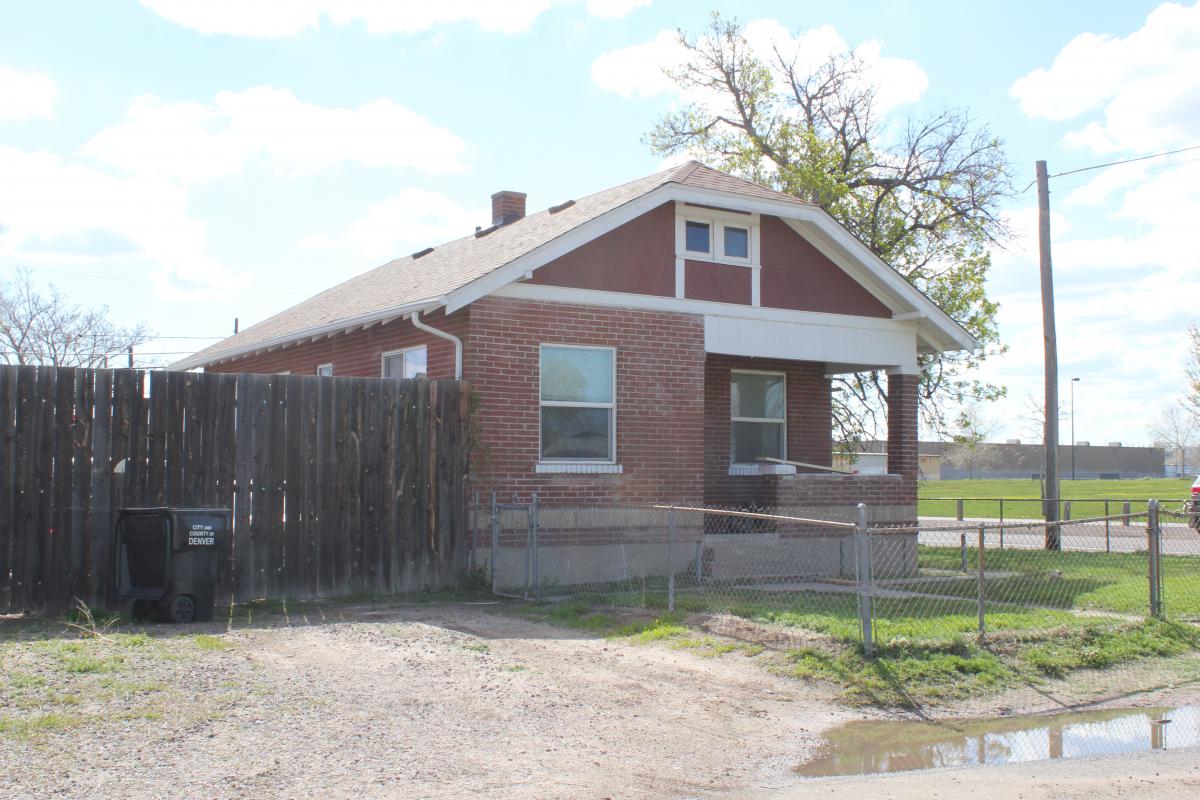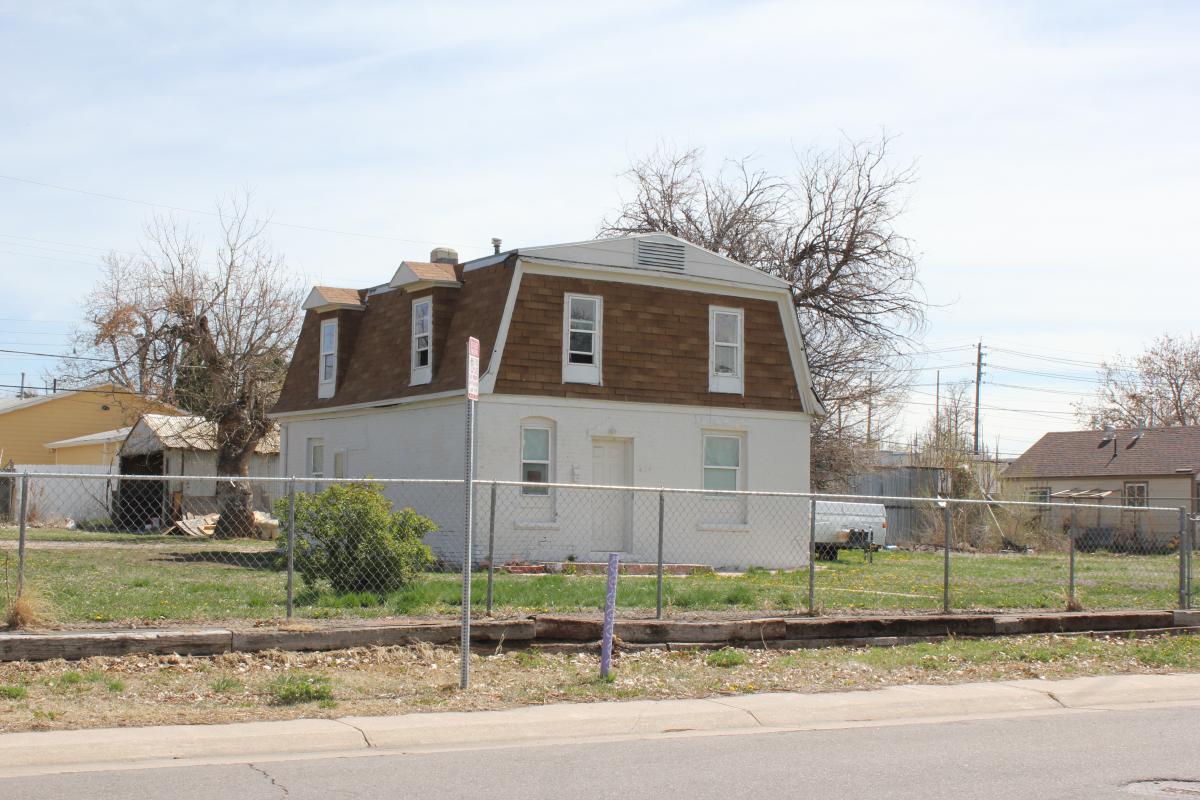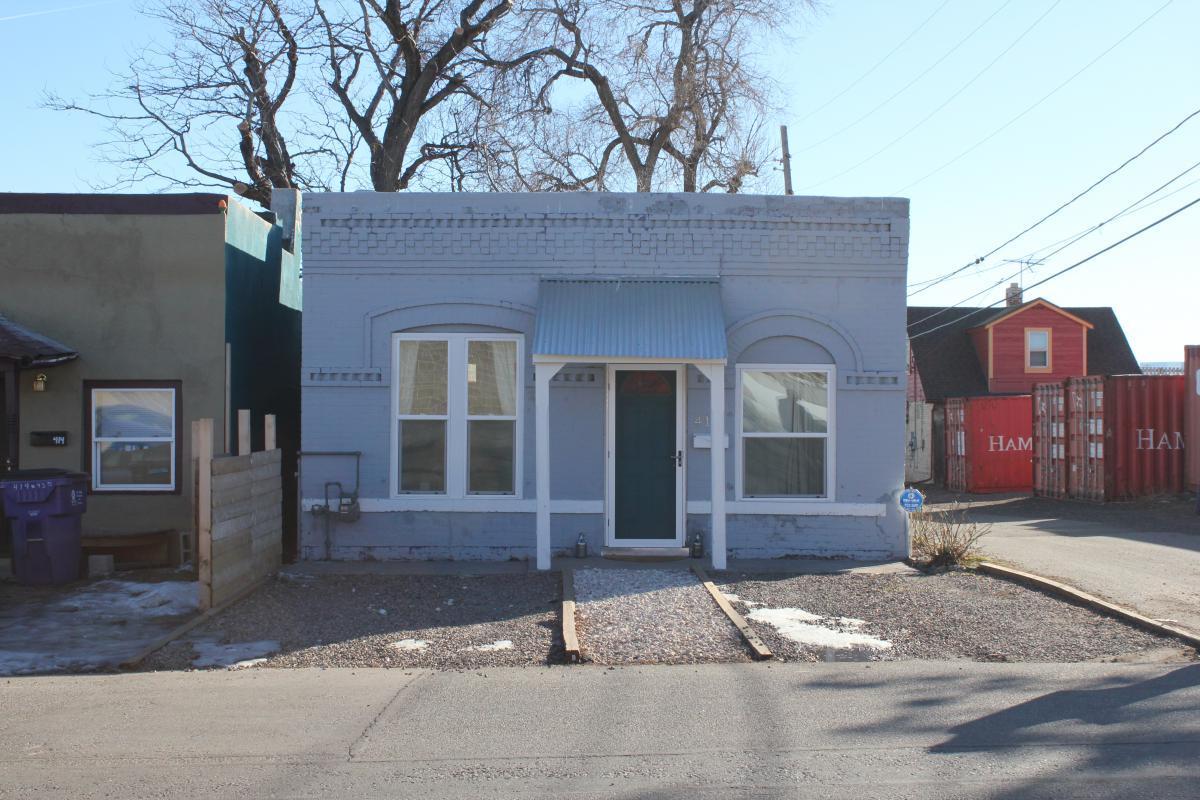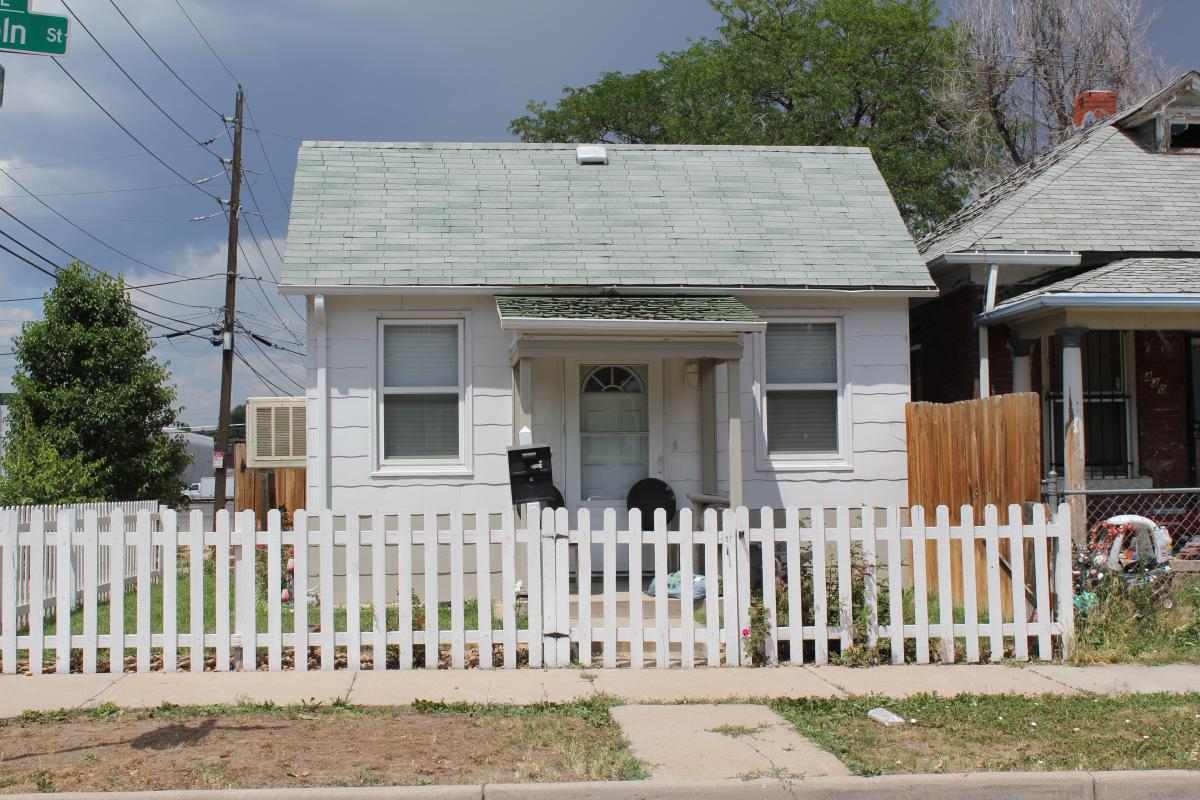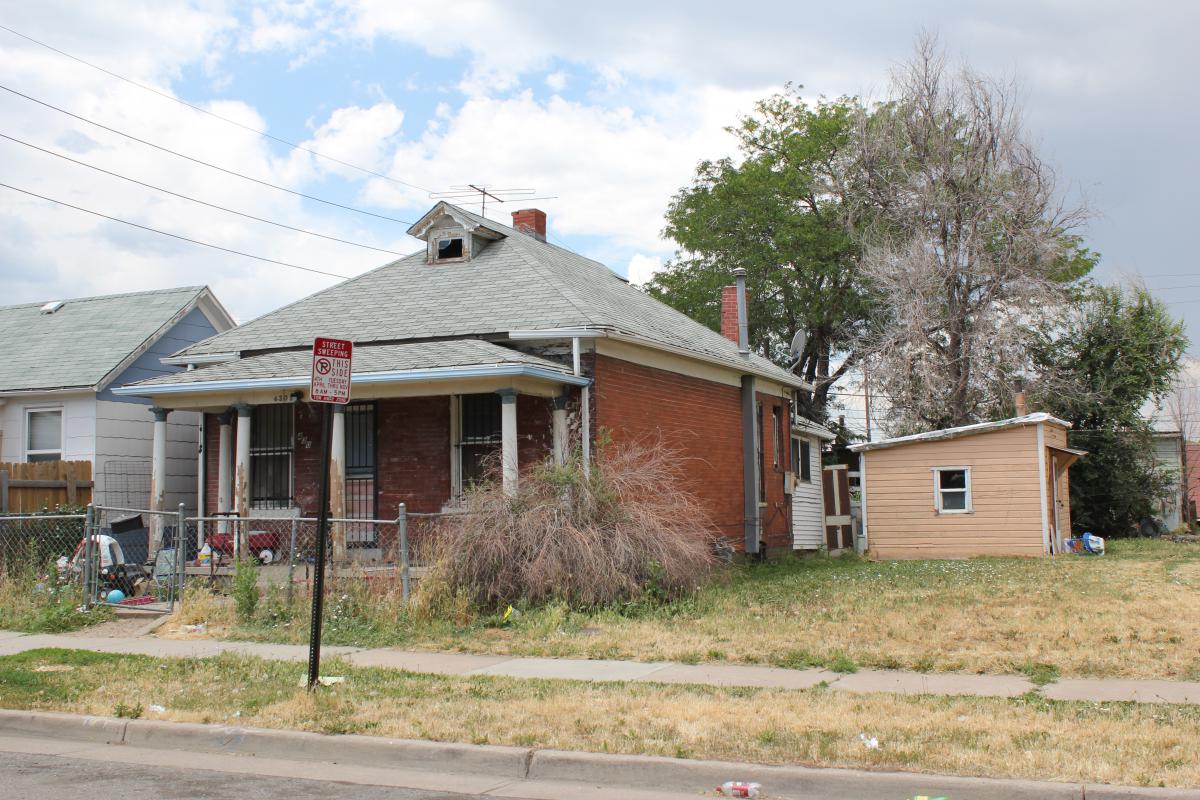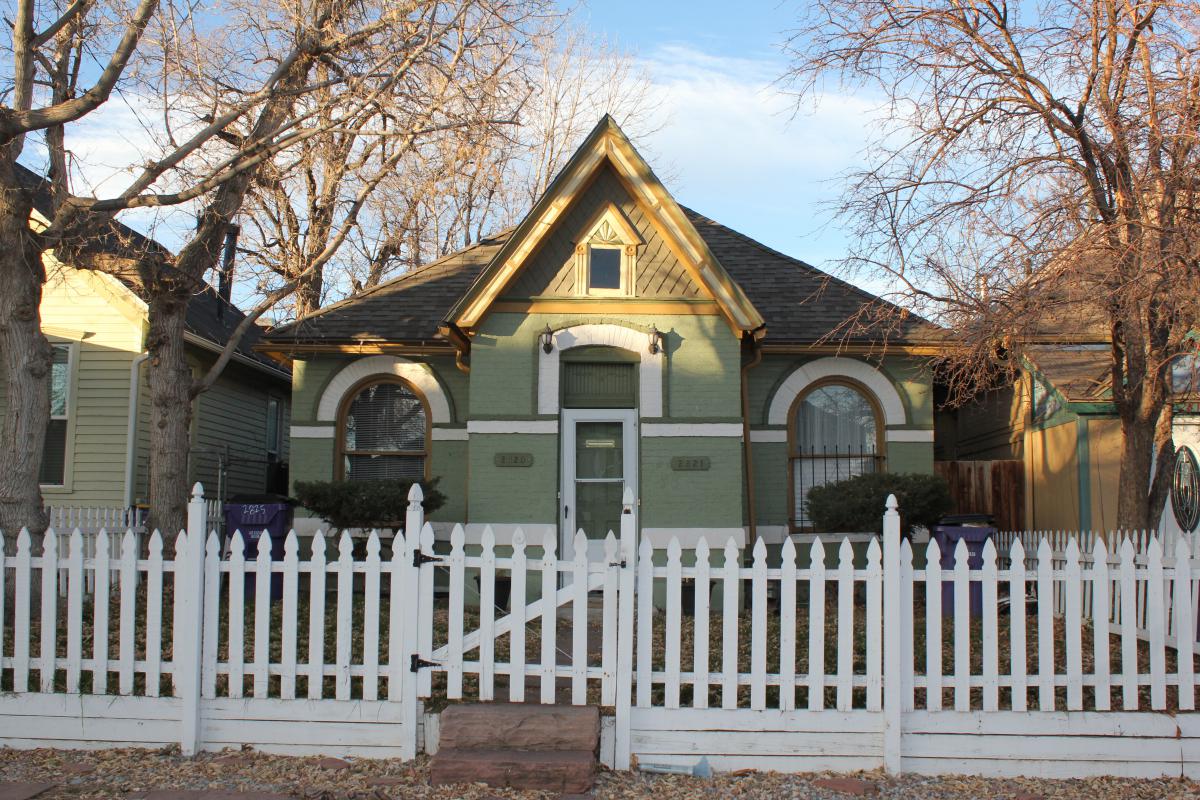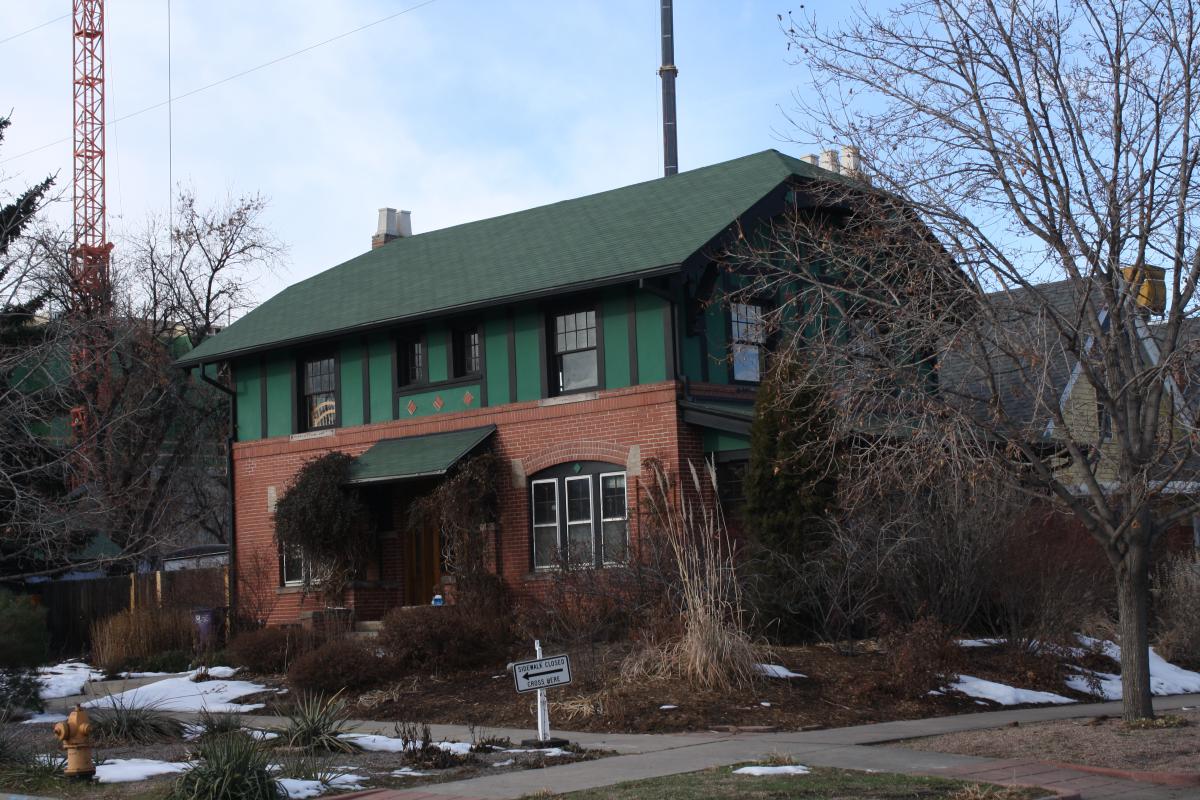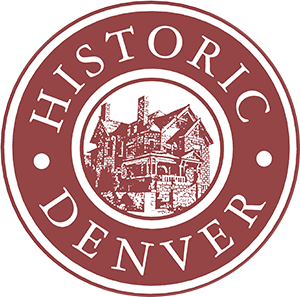South Gaylord Street
Driving through Denver’s old streetcar commercial districts, it's easy to wonder about the businesses that have occupied those great old brick buildings. Such is the case with 1076-1078 South Gaylord Street. In more recent years the building has been home to a sports outfitter, a jewelry store, and an art gallery. Going back to 1920, it was home to Braconier Mechanical & Plumbing Services, known for their expertise in working with older homes (including The Molly Brown House Museum). The very first occupants of this modest structure, however, were the Sihler family and their neighborhood bakery.
Philipp Sihler operated a bakery at 1089 South Pearl Street before hiring local builder Fred Scherer to construct this building for him in 1913. The first floor held the Washington Park Bakery, while the Sihler family, including Philipp, wife Kresentia, and young daughter Barbara, lived upstairs. A photograph provided by Pat Sihler, a descendent of Philipp, shows the family in front of the building with their bakery delivery truck. Streetcar tracks can be seen in the front of the photo on the then-dirt South Gaylord Street.
Sihler only operated the bakery for a few years before selling the building and business and moving to Jefferson County to farm. The bakery was operated by Horace and Louise Brays, and then Emil Wallstrom, before Braconier took over the building in 1920. In its early days, Braconier advertised their plumbing business by building benches out of pipes and placing them near streetcar stops for the use of weary travelers.
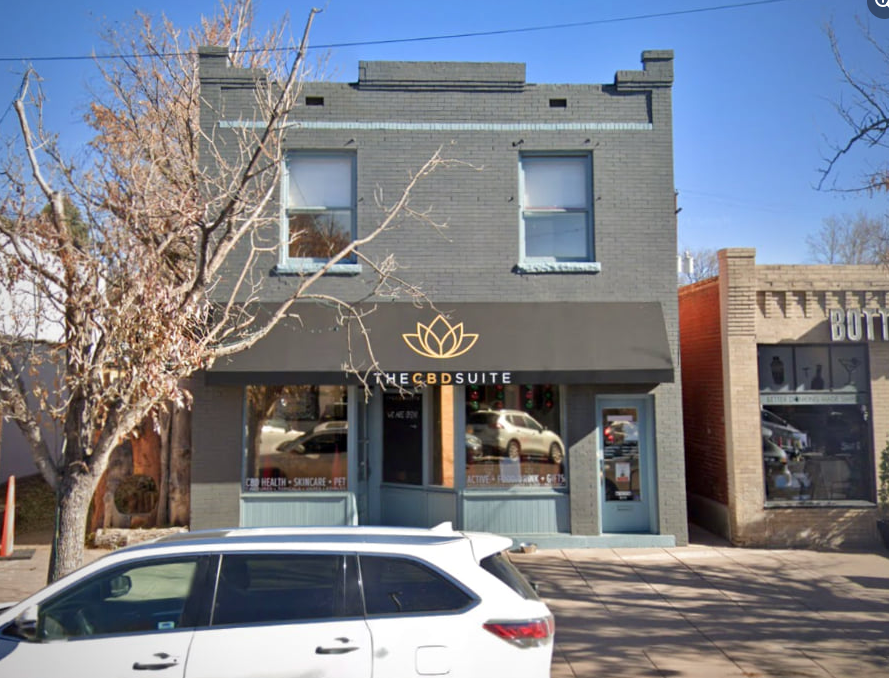
City Park West Neighborhood
Isabella and Gilmore Bartholomew purchased this brick house in City Park West in 1942. The home remained in the Bartholomew family for the next fifty years.
Gilmore Bartholomew was born in 1904 in Louisiana and grew up in Memphis. The 1930 census shows him working as a porter for the railroad. Isabella was born in Tennessee in 1906, and she and Gilmore were married in 1936. By 1940, the couple had moved to Denver where Gilmore worked as a porter for the steam railroad. The 1940 census shows the Bartholomews as lodgers with the Otis Taylor family just a few blocks away on Humboldt Street. Isabella, a graduate of Royal Circle Hospital in Little Rock, Arkansas, worked as a nurse at St. Joseph's Hospital. Gilmore died in 1955, and ownership of the home passed to Isabella.
In 1956, Isabella Bartholomew organized the Denver Chapter of Jack and Jill. The organization was founded in 1938 in Philadelphia and today, according to its website, boasts 252 chapters nationwide representing more than 40,000 family members. The mission of the organization is to nurture future African-American leaders by strengthening children through leadership development, volunteer service, philanthropic giving and civic duty. The Denver chapter is active today and continues the mission. Isabella continued to live in the home until her death in 1992.
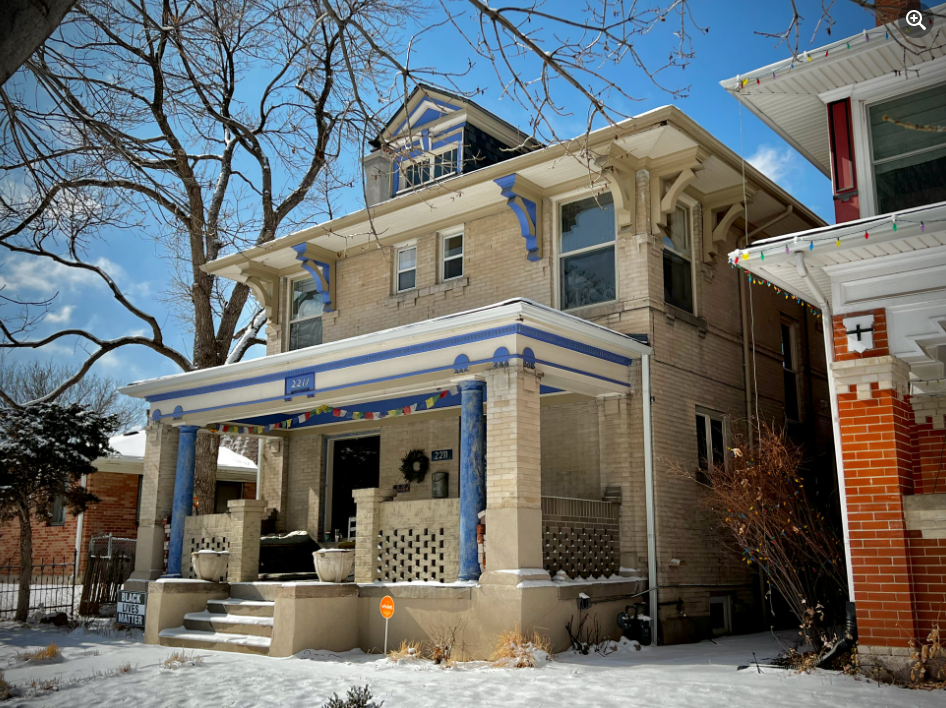
Elyria Swansea Neighborhood
5200 Steele Street
Thomas J. McGovern, an Irish immigrant who came to the United States in 1901, worked as a dairyman in the North Swansea area. By 1911 he owned his own dairy, the Princeton Farm Dairy, located at 5200 Adams Street. The 1920 Federal census shows McGovern, his wife Julia and children Raymond and Jewell, living on the Princeton Farm Dairy property along with two hired hands. This 1925 bungalow, built by McGovern and located a block away at 5200 Steele Street, was likely built to house his employees and those from neighboring dairies. As there was a concentration of small dairies located in the North Swansea area from the early 1900s through the 1950s, this appears to have been a smart investment. A 1911 full-page ad in the Rocky Mountain News lists eleven dairies located in the North Swansea area between East 52nd and East 54th Avenues. In 1947, McGovern sold 5200 Steele Street to Johannes E. Christiansen and his wife Mildred. Johannes "Joe" Christiansen was born in Denver in 1904, the son of Danish immigrants. He owned the nearby Model Farm Dairy, located at 5250 Cook Street.
4036 Adams Street
This house is one of several farmhouses that still exist among blocks of post-war housing in the Elyria Swansea neighborhood. Research by Discover Denver volunteers showed that the house was likely built by Irish immigrants William and Bridget McElroy around 1886. The couple ran one of dozens of small dairies located in Swansea at the end of the 19th century. Bridget, with the help of hired hands, continued to run the dairy after William’s death in 1889. In 1900, the census shows Bridget living here with her daughter Mary and two hired men. In 1905, McElroy sold the dairy to George Parmenter, a druggist originally from Massachusetts. Between 1905 and 1910 the property changed hands four times, but city directories show that it continued to function as a dairy. While the property now consists of the house and a few sheds, a 1908 Denver Post advertisement described it at the time as consisting of a “good brick house ... 6 full lots on the corner, barn, sheds, trees, new windmill and elevated tank, good well, nice mountain view; big bargain at $2,200.”
Globeville Neighborhood
418 W. 43rd Avenue
This small terrace-type building was built c.1886 by Frank and Eliza Grimes, Irish immigrants who came to the United States in 1882. The pair spent several years in New York before moving west and settling in Denver. Early Denver city directories list Frank Grimes as the owner of a saloon on Fox Street, just a few blocks away and near the Boston & Colorado Smelter and the yards of the Denver Sewer Pipe & Clay Company. It is likely that Frank and Eliza Grimes built 418 W. 43rd Avenue, as well as the triplex terrace next door, as rentals. Frank Grimes died in 1893, leaving behind Eliza and the couple’s five children. Assessor records show that Eliza Grimes continued to own these properties, as well as others around the Globeville area, into the early 1920s. These rentals likely provided much needed income after the death of her husband. Renters were generally blue collar workers at the smelter or sewer pipe company, or at the nearby packing plants. Denver attorney Alexander J. Bowland purchased 418 W. 43rd Avenue from Eliza Grimes in 1920, and sold it to Ernest and Viola Munson later that year. Ernest came to the United States from Sweden around 1910, working first at the Boston Smelter and later as a foreman at the Denver Sewer Pipe & Clay Company. The 1917 Denver City Directory shows him rooming at 4256 Elati Street (now demolished), right next door to 418 W. 43rd Avenue. Ernest married Viola, the daughter of his landlords, in 1917. Viola Munson inherited her parent's house in 1925. 418 W. 43rd Avenue stayed in the Munson family until 1975, passing to Ernest and Viola's children after their deaths.
4301 Lincoln Street
George Ostermiller, a German-speaking immigrant from Russia, likely built this modest Globeville home c.1905. The 1910 Federal census shows Ostermiller, his wife Lizzie and two children living here. George immigrated to the United States in 1899 and worked as a car repairman for the nearby railroad. His wife Lizzie immigrated from Russia in 1900 and married George a year later. The Ostermillers sold the property in 1917 to next door neighbor Philip Hahn, another German from Russia. Hahn used the house as a rental property, renting to packing house worker George Nazarenus and his family. Nazarenus, another German-speaking immigrant from Russia, later built a home a block away on Grant Street. The Hahn's daughter Christina and her husband Harry McIntosh rented 4301 Lincoln Street beginning in 1924, before becoming its owners in 1937. Harry worked as a helper with the railroad before becoming a boiler inspector with the city.
4303 Lincoln Street
Philip Hahn purchased this property in 1902. While the 1905 Baist map of Denver shows a small frame residence at this location, a 1908 building permit indicates that the current brick residence replaced it. It is possible that the Hahn family lived in the existing frame residence before building the more permanent house that stands here today. Hahn was a "German from Russia," whose family immigrated from Germany to Russia beginning around the reign of Catherine the Great. As the political climate shifted, many Germans from Russia immigrated to the United States, with most settling in Colorado, Kansas and Nebraska. Hahn was born c.1869 in Russia, and immigrated to the United States about 1900 with his wife Christine and son Henry. Once here, the couple added daughters Christina and Annie to the family. Hahn worked for the railroad in various positions, including as a teamster, a general laborer and a machinist. Ownership of the property stayed in the Hahn family until 1951. The Hahn children lived in the home periodically through their early adulthood.
Jefferson Park Neighborhood
2846 Federal Boulevard
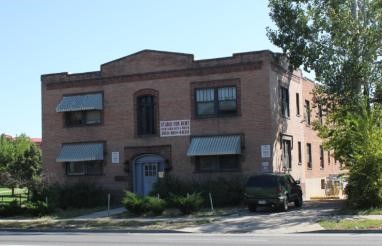
This two-story brick apartment building was built in 1924 by building contractor Josiah T. Vincent. Vincent and his wife, Elmira, were Pennsylvania natives who arrived in Denver prior to 1879. Early tenants of the building were middle-class Denver residents who likely commuted to their jobs via the streetcar that once ran in front of the building. Between 1932 and 1982, the Elmira Apartments were owned by the George W. Clayton Trust. Rent from this building, and from many others owned by the Trust around the city, helped support the George W. Clayton College, an orphanage. Built in 1911, the Clayton College campus is located on Colorado Boulevard between Martin Luther King Boulevard and Bruce Randolph Avenue and is now home to Clayton Early Learning.
2821 W. 25th Avenue
This home was likely built around 1888 by Priscilla T. Bell, the widow of Reverend John Dempster Bell. Before arriving in Denver in 1884, previous stops for the couple included Canon City and Los Angeles. In addition to preaching, Reverend Bell was an author. His books include A Man (1860) and The Great Slighted Fortune (1878). Bell died in Denver in 1886, leaving Priscilla a widow. Priscilla lived in this house until her death in 1922, often taking in renters to help make ends meet. Occupations of early tenants included a tinner, a billiard table manufacturer, a tramcar inspector, a fireman, and a candy maker. For much of its history, the house is listed under two different addresses (2821 and 2825), indicating that it had two units. The original address for the property was 518 Emerald Avenue. After Priscilla's death in 1923, the property changed hands frequently, generally serving as a rental property. Other long-term owners of the property include Fred Landry, a driver for the Deline Manufacturing Company (1929-1937) and Clarence McCuistion, a foreman for the Gates Rubber Company (1955-1964).
2709 W. 27th Avenue
This is the 1912 home of William Meikleham, owner of the Old Homestead Bakery. The house was designed by T. Robert Wieger, a well-known Denver architect who also worked with F. O. Stanley to design the Stanley Hotel in Estes Park. The bakery was located just behind the home, on the current site of the Decatur Point apartments. Old Homestead bread was shipped as far away as Wyoming, Nebraska, Kansas and New Mexico, as well as being delivered throughout the city in specially designed wagons.

